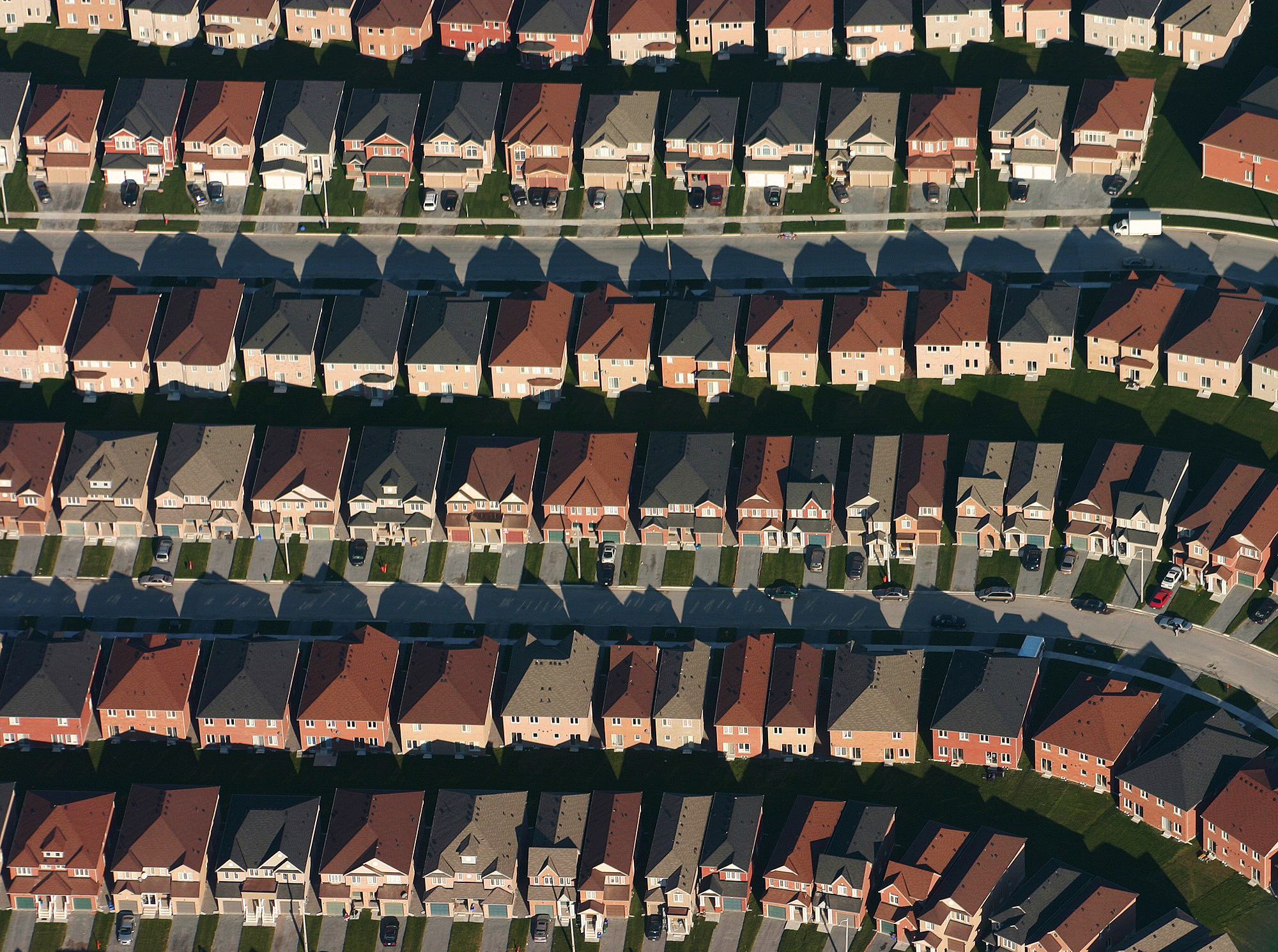
In the 1950s, American average household income rose, and technology such as automobiles and and infrastructure such as the highway allowed for easier transportation and increased efficiency. There was a rise of suburbs, which are neighborhoods that are on the outskirts of cities. The most noticeable character of suburbs is its conformity. The houses in these neighborhoods almost look exactly the same. In a postwar period where people sought for tranquility and peace, it is not hard to understand the demand for a life in the suburbs, where people were on the same grounds as their neighbors, and where people could focus on their families.
Several factors lead to the rise of suburbs. After the war, the automobile industry boomed once again, lead by Ford, General Motors, and Chrysler. The Interstate Highway Act authorized the construction of thousands of miles of roads that made living further from work easier. There was also the appeal of living beyond the noise, pollution, overcrowding, and disease.
The most prominent propellers of suburb construction was the Levitt family, who built the Levittown. They experienced a new way to built communities by using the division of labor. A house construction was divided into exactly 27 steps, like a manufacturing process, therefore, 27 different teams of workers were involved. The workers were specialized in their own "step".
The Levitts' houses were affordable and futuristic, with stoves and television sets included. The streets were also designed to minimize noise. There were sets of rules for the homeowners that made the entire neighborhood presentable, for example, "do not hang laundry outside homes."
Although the suburban development was a key part of the makeup of the modern settlement and a representation of the increasing standard of living of Americans, it was also criticized for several reasons. For example, the idea of conformity might be limiting personal expression. Race was another problem, as African Americans were excluded in many places. As suburbs continue to grow, a new definition of the American life began to form.

Sources:
http://www.ushistory.org/us/53b.asp
http://ushistoryscene.com/article/levittown/
Great post! It is interesting to know home building was divided into 27 steps which meant 27 teams were involved. I only wonder how many people were included in each team? Overall, great summary of the suburbs in the 1950s
ReplyDeleteThis was a great read! I really liked the construction process of the suburbs, but it also helped me understand that even with all the opportunities and growth in society, there was still racial problems and it kept the outcasts from achieving their equal rights and opportunities.
ReplyDeleteI really enjoyed how you analyzed a particularly prominent aspect of American culture in the 1950s and connected it to the overall concept of conformity. You clearly have a deep understanding of the suburb's impact on the American family as well as structural design. However, it is important to explain the resources used for the construction of such large suburbs and the money needed to support it. With mentioning this as well as connecting the suburbs to the paving of the American continental highway system of the same era, readers can better understand the significance of the engineering of the 1950s and how it has shaped America today. For further investigation, here is a suggested article: http://www.history.com/topics/1950s.
ReplyDeleteInteresting post! Adding on to what you mentioned about suburbs being criticized for racial issues, an example of the continuing segregation issue can be seen where blacks were not offered finance housing. Also, many whites would leave a suburb if there was a black who moved in. As a result, the white community would turn into an impoverished minority community - such as an inner-city ghetto, and this was a place where blacks didn't get the opportunities that they hoped to get.
ReplyDeletesource: textbook